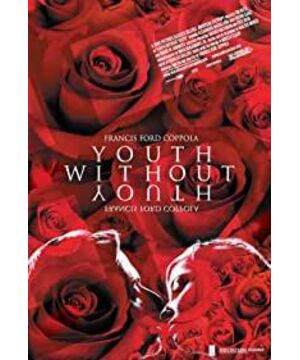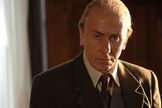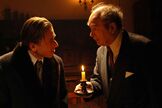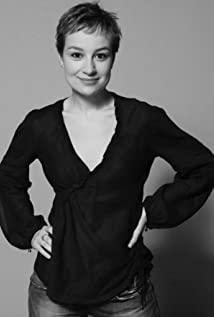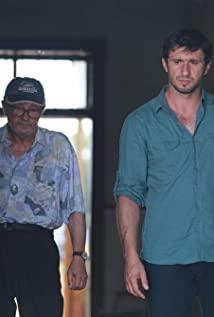I have to admit this is the most difficult content-wise film I've seen since David Lynch's Mulholland Dr. Since every penny in the cost of Youth Without Youth comes from Coppola's red wine earnings, he can show his ten-year retreat skills without any hesitation; he can also read the works of a Romanian theologian. Afterwards, he wrote his own script and his granddaughter went to the local area for 85 days to shoot such an absurd and gorgeous stream-of-consciousness work; he could even take theology, philosophy, religion, linguistics, and sinology into the literature and history category of the university library. The contents of half of the book collection are logically displayed within two hours with the camera...
Youth Without Youth, perhaps before they understood its meaning, they already fell in love with the name. The same is true of the movie itself. A thousand people have a thousand ways of understanding, and even people of different ages will have different perceptions. Good works can always stand the test of time. Coppola says it's a very personal and intimate work, and maybe that's why I liked it before I saw it, and what's cooler than having the public cater to it instead of it being catered to the public? Maybe some of the following crazy words will laugh at yourself after watching them for a few years, but after watching this film in the early morning yesterday, I really tossed and turned and stayed up all night (slightly exaggerated, but the whole film explained so much that I only had time to think about it. on the bed after that), so don't spit it out.
This is a movie about life. The protagonist Tim Roth, a linguistics professor over seventy years old, was at a loss when it came to his last book - the origin of language. When he was dying, he was struck by lightning on the very religious holiday of Easter; People can directly ascend to heaven, legend has it, so Tim Roth regained his youth and possessed an unforgettable language talent. I wonder if it is a heavenly state. However, Tim Roth gradually discovered his dual split personality of sensibility and rationality, and in the development of the plot, the two personalities alternated to take the upper hand. In the final scene, when one completely defeated the other, Tim Roth also returned to the original state. Falling into the snow and dying, life seems to have been reincarnated.
This is also a movie about love. Tim Roth's fiancee once left him because he couldn't get into his language time, but when he was young, Tim Roth met a woman exactly like his fiancee one day. He had a premonition that she would have the same experience - after a lightning strike, he shot Save each other (don't know if there is a religious meaning to it) and love each other. Not long after, Tim Roth discovered the mysterious power in her girlfriend: she will master the language of the age with the passage of time. This is God giving him another chance to chase his dream. He also wakes up the Indian goddess in his girlfriend again and again. Desire to save human civilization. But when he finds that this will make his girlfriend continue to age and suffer, the conflict reignites, and finally the sensibility of love allows Tim Roth to keep his girlfriend's youth but give up his career. The last photo of the two passing by at the train station showed a trace of melancholy.
This is also a film about philosophy. This is the part that excites me the most. Coppola's passion for Sinology is revealed more than once in the film. "Life is like a dream, only Dao" at the beginning and "Zhuang Zhou dreams of a butterfly, a butterfly dreams of Zhuang Zhou" at the end of the film more or less reflect the oriental philosophy of "everything is empty" , Tim Roth returned to youth with nothing, and lost youth with nothing, is everything just a dream? unknown. In the film, I still see the ideas of Western philosophy, dual personalities, time and space transformation, etc... Personally, I like the clips of the three roses very much. Coppola explicitly or implicitly expresses the "self" of these dual personalities through roses. Interpreting it, Tim Roth's alter-ego once asked, "Where do you want me to put the roses?" Tim Roth replied, "One on my hand and the other on my knee." (A close-up of the rose on the hand, and the close-up of the rose on the knee) The so-called "metaphysical thing is called Tao, and metaphysical thing is called implement"; the upper is the spirit, the lower is the material, one abstract, the other concrete, seems to represent two Tim Roth, one idealism, and the other materialism. What about the last third rose, does it represent reality? Again unknown.
Coppola played a stream of consciousness in this film this time, playing with various shooting techniques, sometimes abstract, rotating, zooming, looming, and sometimes standing upside down. There are some things that I still don’t understand.” The picture of the film is impeccable, and the sense of light is excellent. With the low cello symphony, almost every frame is worth scrutinizing, but the content involves too many levels, and every bridge seems to have a metaphor, which makes people have no time to think about it; Perhaps only after 10 years of dedicated study can we have such an experience as Coppola. In the film, Tim Roth still has the same plasticity and smirk, but he still likes his crazy performance at the head and tail of Pulp Fiction; the heroine Alexandra Maria Lara is already a big surprise in The Downfall, and this time one person plays the triangle is still brilliant , an actor who has been very obsessed recently, very beautiful, very Central European.
View more about Youth Without Youth reviews


